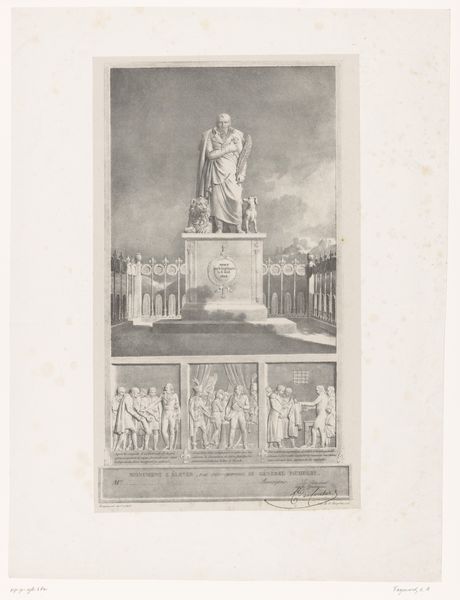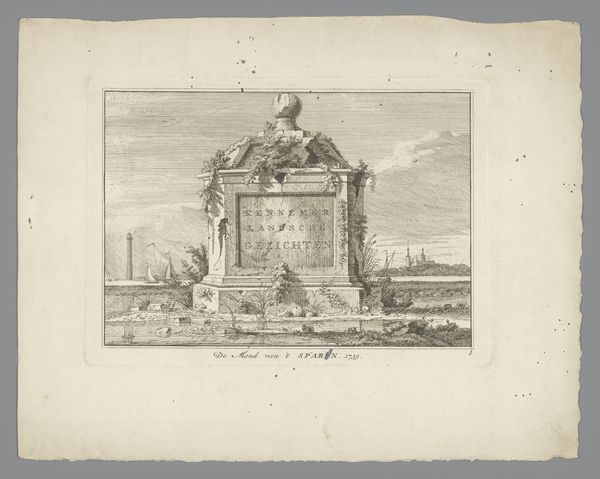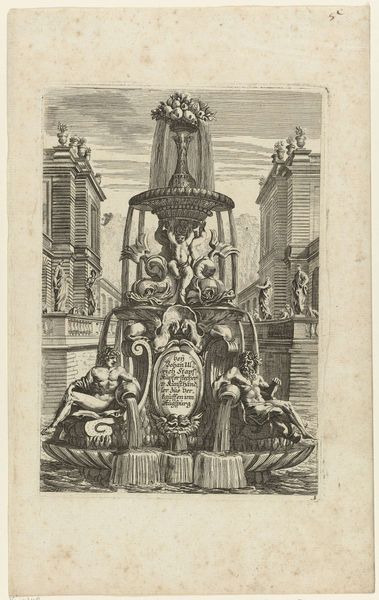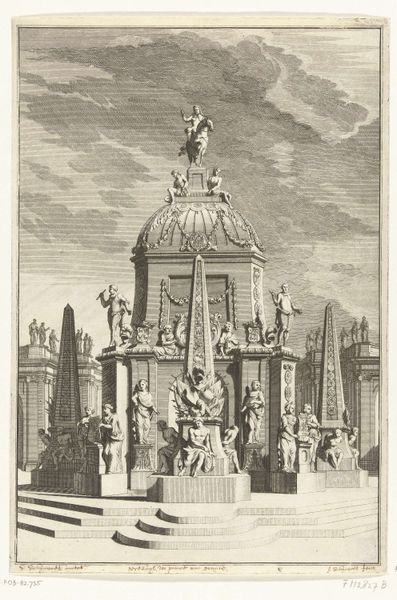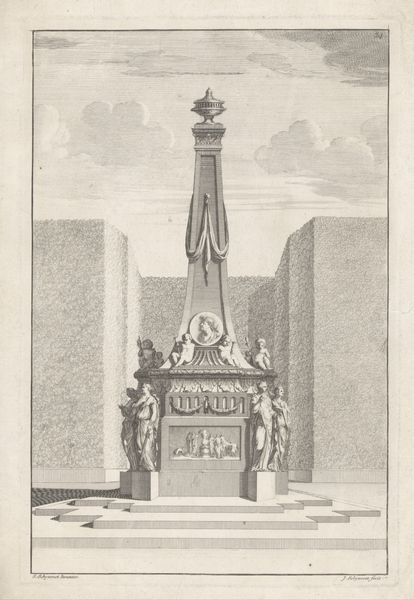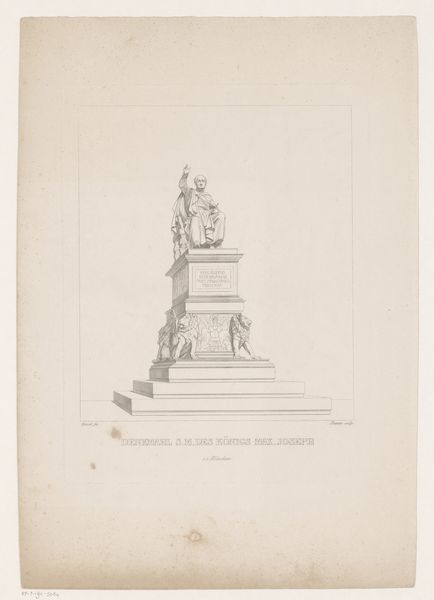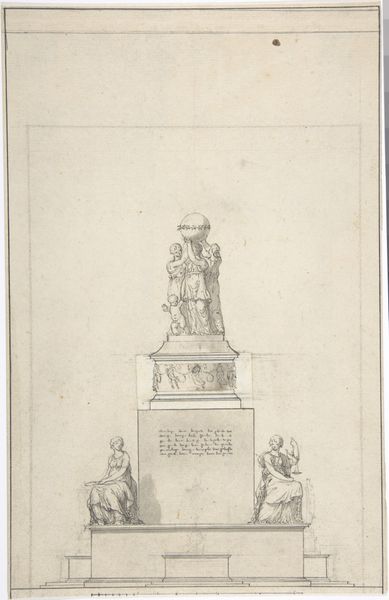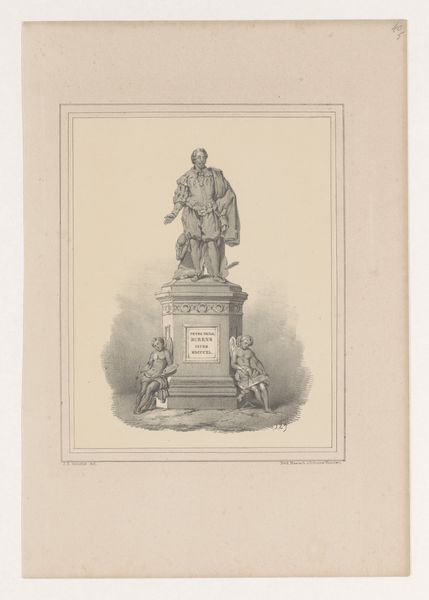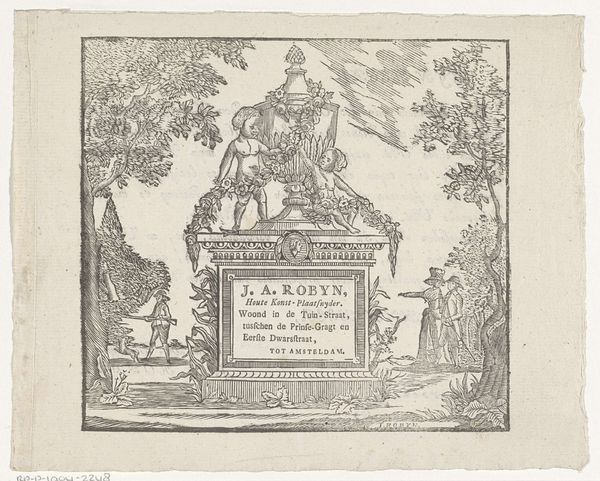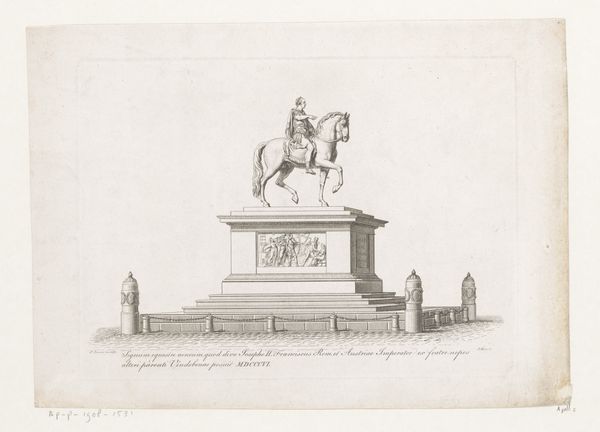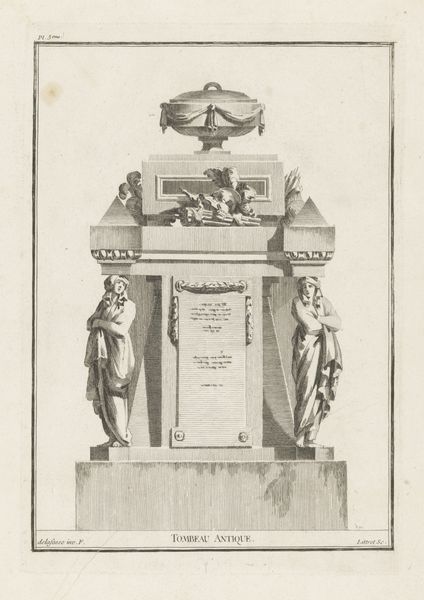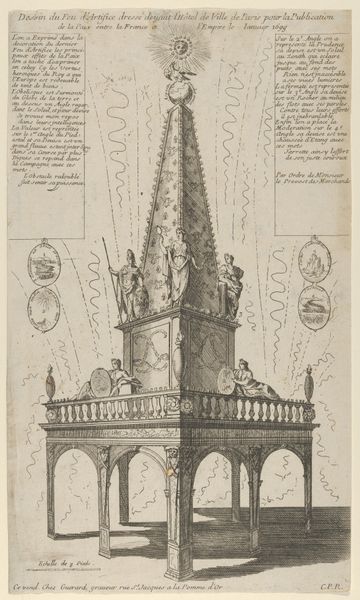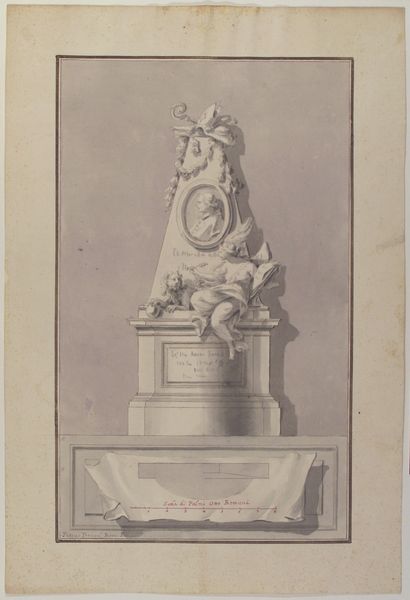
Ruiterstandbeeld van Jozef I op het Praça do Comércio te Lissabon c. 1774 - 1796
0:00
0:00
Dimensions: height 312 mm, width 213 mm
Copyright: Rijks Museum: Open Domain
Editor: Here we have a rather impressive print by Gaspar Fróis Machado, dating back to around 1774-1796, titled "Equestrian Statue of Joseph I in the Praça do Comércio in Lisbon." It’s an engraving showing a monumental statue and city square. The level of detail is incredible, almost photographic, but it’s interesting that people populate the space with their varied activities. What historical and social factors were at play during this piece's creation? Curator: The piece, while appearing simply representational, operates on several levels tied to Portuguese socio-political conditions. Equestrian statues historically symbolized power and authority; therefore, this engraving functions as a public relations tool, reinforcing the monarchy's image. The fact that this statue exists within the Praça do Comércio - rebuilt after the devastating 1755 earthquake - further emphasizes the monarchy’s role in reconstruction and modernization efforts. Consider this engraving’s broader distribution; How does printmaking technology shape the accessibility and therefore, the politics of imagery during this period? Editor: That’s fascinating. The statue, then, isn't just art; it's a political statement broadcasted through print. Were there specific artistic choices reinforcing this message? Curator: Absolutely. Look at the deliberate placement of the statue relative to the architecture. Its scale dominates the surrounding space, which gives viewers the feeling of monarchial power over the civic landscape, especially important post-earthquake. Consider too, Baroque art conventions – dramatic light, ornate detailing. All carefully curated to evoke awe and obedience. To further enhance the King's stature. The act of memorialization is intrinsically linked to the performance of power, isn't it? Editor: Yes, definitely. I hadn't considered how all these elements – artistic style, city planning, the medium of print – work together to construct a very deliberate narrative. Thank you. Curator: Indeed. Reflecting on the role art serves as not just decoration but also political communication enriches our perception of historical power dynamics and this work.
Comments
No comments
Be the first to comment and join the conversation on the ultimate creative platform.
